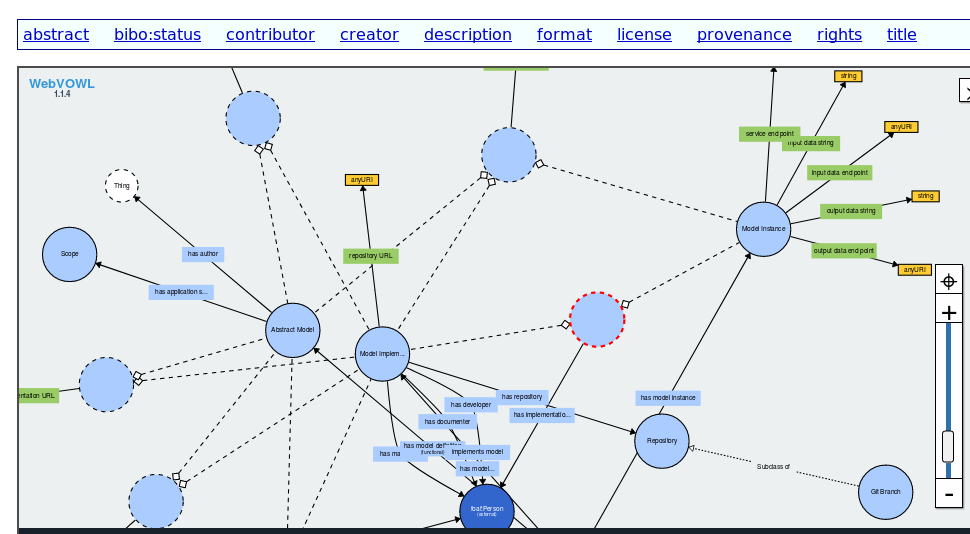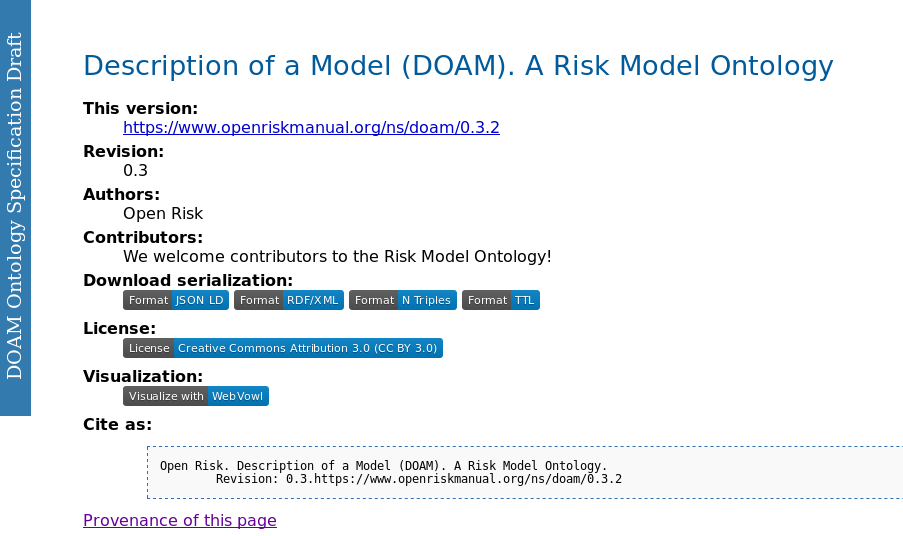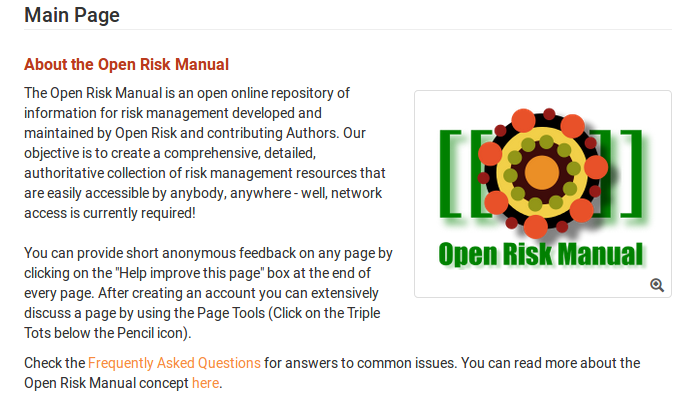Risk Model Ontology
Semantic Web Technologies
The Risk Model Ontology is a framework that aims to represent and categorize knowledge about risk models using semantic web information technologies.
In principle any semantic technology can be the starting point for a risk model ontology. The Open Risk Manual adopts the W3C’s Web Ontology Language (OWL). OWL is a Semantic Web language designed to represent rich and complex knowledge about things, groups of things, and relations between things. OWL is a computational logic-based language such that knowledge expressed in OWL can be exploited by computer programs, e.g., to verify the consistency of that knowledge or to make implicit knowledge explicit. OWL documents, known as ontologies, can be published in the World Wide Web and may refer to or be referred from other OWL ontologies. OWL is part of the W3C’s Semantic Web technology stack, which includes RDF, RDFS, SPARQL, etc
The Risk Model Ontology

The Risk Model Ontology, codenamed Description of a Model (DOAM) codifies the relationship between the various components of a risk model universe.

There are three key elements to the DOAM ontology (Currently 0.3 version):
- The DOAM Classes (Concepts) that define the relevant aspects of the Risk Model Universe
- DOAM Object Properties (Relationships between classes / concepts), e.g. A model has a model validator
- Data Properties (Data literals associated with classes / concepts), e.g. A model has a required input
DOAM Classes
Classes (owl:Class) are the main concepts handled by the ontology. The choice of classes defines the scope of this knowledge domain. The current classes are:
- Risk Model, is the core class that is the subject of the ontology
- The Abstract Risk Model, the conceptual definition of the model
- The Model Specification, a concrete specification of a model that populates any information placeholders defined in the Abstract Risk Model description
- The Model Implementation, the computer programs and any other resources required to operate the model
- The live Model Instance that is deployed in operation (production)
- A risk model category as part of a Model Taxonomy to which the model belongs
- A model scope
- A Code Repository
DOAM Object Properties
Object properties (owl:ObjectProperty) relate individual instances of two OWL classes:
hasTester
hasScope
hasModelCategory
hasRepository
hasMaintainer
hasDocumenter
hasDeveloper
hasAuthor
hasDefinition
hasAbstractModel
hasModelImplementation
hasModelInstance
hasModelSpecification
isImplementing
DOAM Datatype Properties
Datatype properties (owl:DatatypeProperty) relates individuals (instances) of the DOAM OWL classes to literal values.
creationDate
dataEndPoint
description
documentationURL
inputDataEndPoint
inputDataString
name
outputDataEndPoint
outputDataString
repositoryURL
revision
serviceEndPoint
shortdesc
trainingURL
Use in the Open Risk Manual

DOAM is embedded and used in the Open Risk Manual and associated Open Source Projects.
- Various risk manual entries (pages) serve as additional documentation (annotation) of DOAM elements (the relevant page is indicated / linked to via rdfs:seeAlso annotations in the DOAM file itself)
- Open Source Risk Models use manual entries as the definitive Abstract Risk Model documentation page
- The DOAM ontology is imported to use by the semantic mediawiki extension (enables more sophisticated queries)
Comment
If you want to comment on this post you can do so on Reddit or alternatively at the Open Risk Commons. Please note that you will need a Reddit or Open Risk Commons account respectively to be able to comment!